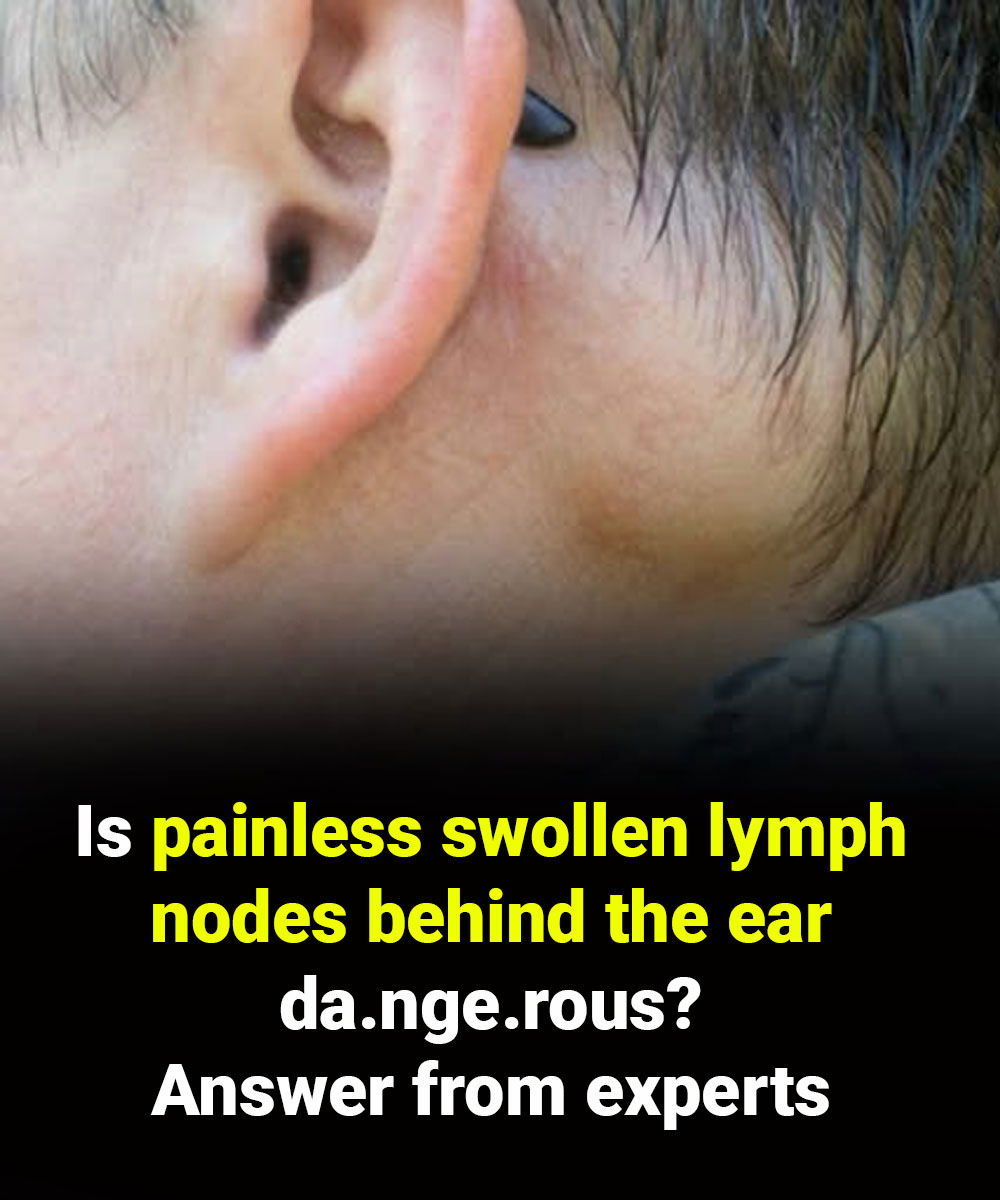
Symptoms of Swollen Lymph Nodes Behind the Ear
As the immune system fights off disease-causing agents like viruses or bacteria, the lymph nodes behind the ear may swell, and the surrounding skin can become red and warm.
Sometimes, the patient may feel pain behind the ear and experience symptoms such as fatigue, sore throat, fever, or difficulty swallowing.
Is a Painless Lump Behind the Ear a Cause for Concern?
A painless lump behind the ear is often benign and usually not something to be worred about. These lumps are commonly swollen lymph nodes in response to infection or immune system activity. A lipoma—a benign tumor of fatty tissue—can also appear as a painless lump behind the ear.
A Lump May Be a Sign of Infection
A painless lump behind the ear could indicate that the body is dealing with an illness or infection.
Is a Lump Behind the Ear Dangerous?
In certain cases, a swollen lymph node behind the ear can signal the following serious conditions:
1. C:ancer
A lump behind the ear may be among the early signs of thyroid cancer or cancers of the head and neck region. These types of nodes are usually small, not overly painful, and therefore difficult to detect.
In cases of thyroid cancer, the nodes behind the ear can vary in size, growing gradually over time. They may initially move but later become fixed in place. When touched, these nodes may feel hard and painful. It’s crucial to visit a hospital for evaluation as soon as these lumps are detected. Early diagnosis can improve outcomes.
2. Lipoma (Fatty Tumor)
Lipomas grow slowly, usually located between the skin and the underlying muscle layer, generally under 5 cm in diameter, and may increase in size. They are typically soft and move easily under finger pressure. Lipomas are more common in middle-aged individuals, and some people may have more than one.
Lipomas are not can:cerous and are usually harmless. Treatment is often unnecessary unless the lipoma causes pain or discomfort, in which case removal is an option.
3. Swollen Lymph Nodes
Lymph nodes are part of the immune system, responsible for filtering and removing harmful bacteria and viruses. They are found in various areas throughout the body, including behind the ears.
Swollen lymph nodes may be caused by:
Infections
Skin conditions
Dental issues
Cancer
Treatment depends on the underlying cause of the swelling.
4. Infections
A painless lump behind the ear could originate from d:ead cells or harmful bacteria accumulating in the lymph nodes, leading to infection. Infections may be responsible for diseases such as chickenpox, measles, or pharyngitis. If left untreated, the lumps behind the ear or neck may progress to mastitis. Early hospital treatment is advised to prevent serious complications.
5. Mastoiditis
Mastoiditis is a bacterial infection that affects the mastoid bone and can cause a painless lump behind the ear. The mastoid is a part of the skull located behind the ear and has a honeycomb-like structure where infections can spread through its air spaces. This condition is more common in children than in adults.
Mastoiditis is a serious infection requiring medical attention. Other symptoms accompanying a lump behind the ear include:
Pus drainage
Hearing loss
Fever
Fatigue and irritability
Headache
Those who suffer from frequent or severe ear infections are at higher risk. Treatment typically includes antibiotics or, in severe cases, surgery to drain or remove the infection.
6. Sebaceous Cyst
These cysts can form from damaged sebaceous glands or malfunctioning oil glands, disrupting the breakdown process. This may result in the formation of cysts or lumps behind the ear or in the neck area.
Lumps or nodes behind the ear can also result from other conditions such as acne or large pimples.
What to Do When You Notice a Lump Behind Your Ear

If you detect a lump behind your ear, take the following steps:
Observe accompanying symptoms to determine the cause.
Check the lump’s size and whether it is painful.
Avoid touching, squeezing, or pressing the lump, as it may worsen inflammation.
Do not self-medicate with antibiotics or painkillers without a doctor’s recommendation.
Get enough rest and maintain a strong immune system.
Drink plenty of water to flush out toxins and support recovery.
It is important to consult a doctor for early diagnosis and treatment, especially if the lump is:
Painful
Changing or growing
Suddenly appearing
How to Prevent Painless Lumps Behind the Ear
Hand hygiene: Wash your hands frequently to prevent the spread of infections caused by viruses and bacteria that may lead to swollen lymph nodes.
Avoid touching your face: Prevent the transfer of bacteria from hands to the ears, neck, and face.
Treat ear infections promptly: These can lead to swollen nodes behind the ears.
Address sinus infections and colds early: Prompt treatment helps prevent swollen lymph nodes.
Eat a balanced diet: Include plenty of fruits and vegetables to support the immune system, especially those rich in vitamin C (like oranges, strawberries, and bell peppers) and zinc (like pumpkin seeds, beans, and nuts).
Stay hydrated: Drinking enough water keeps your immune system functioning well.
Get adequate sleep: Proper rest supports a strong immune system.
Manage stress: Chronic stress weakens the immune system, making you more prone to infections. Try relaxation techniques like yoga, meditation, or deep breathing.
Control allergies: Allergic reactions can mildly swell lymph nodes. Using antihistamines or other treatments can help prevent this.















